Related Research Articles
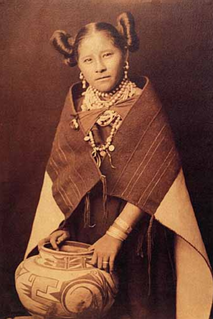
The Hopi are a Native American tribe who primarily live on the Hopi Reservation in northeastern Arizona. As of the 2010 census, there are 19,338 Hopi in the United States. The Hopi Tribe is a sovereign nation within the United States and has government-to-government relations with the United States federal government. Particular villages retain autonomy under the Hopi Constitution and Bylaws. The Hopi language is one of 30 in the Uto-Aztecan language family. The majority of Hopi people are enrolled in the Hopi Tribe of Arizona but some are enrolled in the Colorado River Indian Tribes. The Hopi Reservation covers a land area of 2,531.773 sq mi (6,557.26 km2).
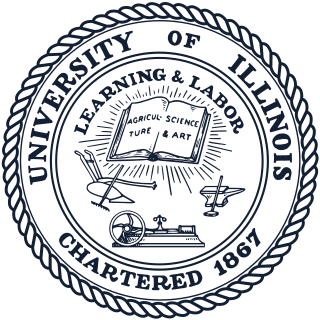
The University of Illinois System is a system of public universities in Illinois consisting of three universities: Chicago, Springfield, and Urbana-Champaign. Across its three universities, the University of Illinois System enrolls more than 94,000 students. It had an operating budget of $7.18 billion in 2021.

The University of Illinois Urbana-Champaign is a public land-grant research university in Illinois in the twin cities of Champaign and Urbana. It is the flagship institution of the University of Illinois system and was founded in 1867. Enrolling over 56,000 undergraduate and graduate students, the University of Illinois is one of the largest public universities by enrollment in the nation.

Chief Illiniwek was the symbol of the University of Illinois Urbana–Champaign (UIUC), associated with the University's intercollegiate athletic programs, from October 30, 1926 to February 21, 2007. Chief Illiniwek was portrayed by a student to represent the Illiniwek, the state's namesake, although the regalia worn was from the Sioux. The student portraying Chief Illiniwek performed during halftime of Illinois football and basketball games, as well as during women's volleyball matches.
"Public Ivy" is a term that refers to prestigious public colleges and universities in the United States that provide a collegiate experience similar to those in the Ivy League. The list of "public ivy" institutions has gone through several revisions over the years, much like other university rankings and conferences. The term was first coined by Yale University admissions officer Richard Moll, who published Public Ivies: A Guide to America's Best Public Undergraduate Colleges and Universities in 1985.
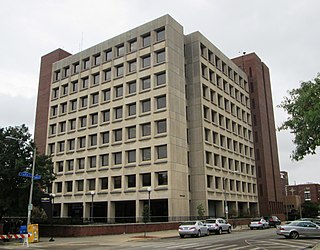
The College of Liberal Arts and Sciences (LAS) is the largest college of the University of Illinois Urbana-Champaign. The college was established in 1913 through the merger of the College of Literature and Arts and the College of Science. The college offers seventy undergraduate majors, as well as master's and Ph.D. programs. As of 2020, there are nearly 12,000 undergraduate students and 2,500 graduate students attending the College of Liberal Arts and Sciences.
The University of Illinois College of Medicine offers a four-year program leading to the MD degree at four different sites in Illinois: Chicago, Peoria, Rockford, and formerly Urbana–Champaign. The Urbana–Champaign site stopped accepting new students after Fall 2016 to make room for the newly established Carle Illinois College of Medicine.
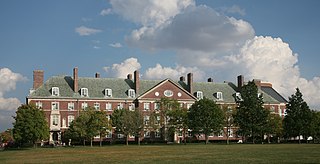
The University of Illinois Urbana-Champaign's College of Agricultural, Consumer and Environmental Sciences (ACES) is part of the University of Illinois Urbana-Champaign and is considered by some to be the top school of agriculture-related sciences in the world. Most of the ACES buildings are located on the South Quad. In terms of staff, ACES has 186 tenure-system faculty, 78 specialized faculty, 26 postdoctoral researchers, 493 academic professionals, 565 civil service staff, 323 assistants, and 956 hourly employees.

Sherman Indian High School (SIHS) is an off-reservation boarding high school for Native Americans. Originally opened in 1892 as the Perris Indian School, in Perris, California, the school was relocated to Riverside, California in 1903, under the name Sherman Institute. When the school was accredited by the Western Association of Schools and Colleges in 1971, it became known as Sherman Indian High School.
The Institute for Computing in Humanities, Arts, and Social Science (I-CHASS) at the University of Illinois at Urbana–Champaign was established in 2005 to conduct leading-edge research at the intersection of high performance computing and humanities, arts, and social science scholarship. I-CHASS is hosted by the National Center for Supercomputing Applications (NCSA) and maintains strategic partnerships with NCSA, the Great Lakes Consortium for Petascale Computation (GLCPC), and the Illinois Informatics Institute (I3). Through its work on identifying, creating, and adapting computational tools that accelerate research and education, it engages scholars from the University of Illinois and from across the globe to demonstrate approaches to next-generation interdisciplinary research with high performance computing.
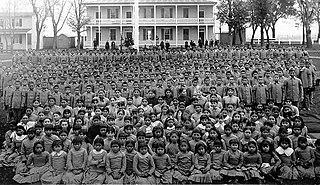
American Indian boarding schools, also known more recently as AmericanIndian Residential Schools, were established in the United States from the mid 17th to the early 20th centuries with a primary objective of "civilizing" or assimilating Native American children and youth into Euro-American culture. In the process, these schools denigrated Native American culture and made children give up their languages and religion. At the same time the schools provided a basic Western education. These boarding schools were first established by Christian missionaries of various denominations. The missionaries were often approved by the federal government to start both missions and schools on reservations, especially in the lightly populated areas of the West. In the late 19th and early 20th centuries especially, the government paid religious orders to provide basic education to Native American children on reservations, and later established its own schools on reservations. The Bureau of Indian Affairs (BIA) also founded additional off-reservation boarding schools based on the assimilation model. These sometimes drew children from a variety of tribes. In addition, religious orders established off-reservation schools.
Jean Fredericks (1906–1990) was a Hopi photographer. He grew up in Old Oraibi, Arizona, a village located on Third Mesa on the Hopi Reservation.
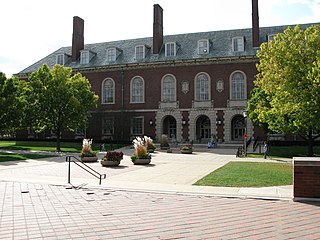
The University Library at the University of Illinois at Urbana–Champaign is the network of libraries, including both physical and virtual library spaces, which serves the University's students, faculty, and staff, as well as scholars and researchers worldwide. The University Library continues to evolve to serve the needs of the University of Illinois at Urbana–Champaign campus.

The history of the University of Illinois Urbana-Champaign dates back to 1862. U of I is a public research-intensive university in the U.S. state of Illinois. A land-grant university, it is the flagship campus of the University of Illinois system. The University of Illinois Urbana-Champaign opened on March 2, 1868, and is the second oldest public university in the state, and is a founding member of the Big Ten Conference.
Lomayumtewa C. "Loma" Ishii is a Hopi associate professor and researcher, working in the Applied Indigenous Studies department at Northern Arizona University.
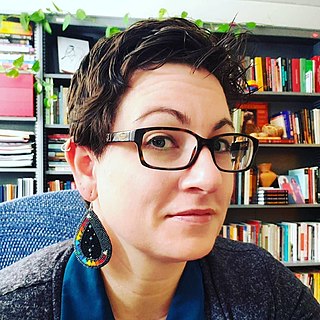
Jenny L. Davis is an American linguist, anthropologist, and poet. She is an Associate Professor of Anthropology, American Indian Studies, and Gender & Women's Studies at the University of Illinois at Urbana–Champaign where she is the director of the American Indian Studies Program. Her research is on contemporary Indigenous languages and identity, focusing on Indigenous language revitalization and Indigenous gender and sexuality, especially within the Two-Spirit movement.
Pedro de Tovar was a Spanish explorer, military man and colonial administrator. He was part of Francisco Vazquez de Coronado's expedition and led the first expedition to Cibola in 1540. Tovar was also the first European to hear about the existence of the Grand Canyon, although he did not get to see it. He was also a member of Nuño Beltrán de Guzmán's troops during the conquest of Nueva Galicia, as well as collaborating in the colonization of Guadalajara and the foundation of Culiacán, in modern Mexico. After that, he was alcalde of Nueva Galicia and Culiacán.
Native American outing programs were associated with American Indian boarding schools in the United States. These were operated both on and off reservations, primarily from the late 19th century to World War II. Students from boarding schools were assigned to live with and work for European-American families, often during summers, ostensibly to learn more about English language, useful skills, and majority culture. Many boarding schools continued operating into the 1960s and 1970s.
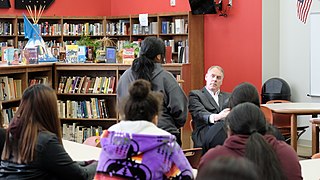
Riverside Indian School (RIS) is a Bureau of Indian Education-operated boarding school in unincorporated Caddo County, Oklahoma, with an Anadarko address, for grades 4-12.
Mark Erno Hauber is an American ornithologist and Endowed Professor at the University of Illinois Urbana-Champaign. His research considers the development of avian recognition systems.
References
- ↑ "Matthew Sakiestewa Gilbert | LinkedIn". www.linkedin.com. Retrieved 2016-04-10.
- ↑ "Matthew Sakiestewa Gilbert « Department of History, College of LAS, University of Illinois". www.history.illinois.edu. Retrieved 2016-04-10.
- ↑ "The Indian School on Magnolia Avenue | OSU Press". osupress.oregonstate.edu. Retrieved 2016-04-10.
- ↑ "Education Beyond the Mesas: Hopi Students at Sherman Institute, 1902-1929" . Retrieved May 3, 2019.
- ↑ "Matthew Sakiestewa Gilbert « Department of History, College of LAS, University of Illinois". www.history.illinois.edu. Retrieved 2016-04-10.